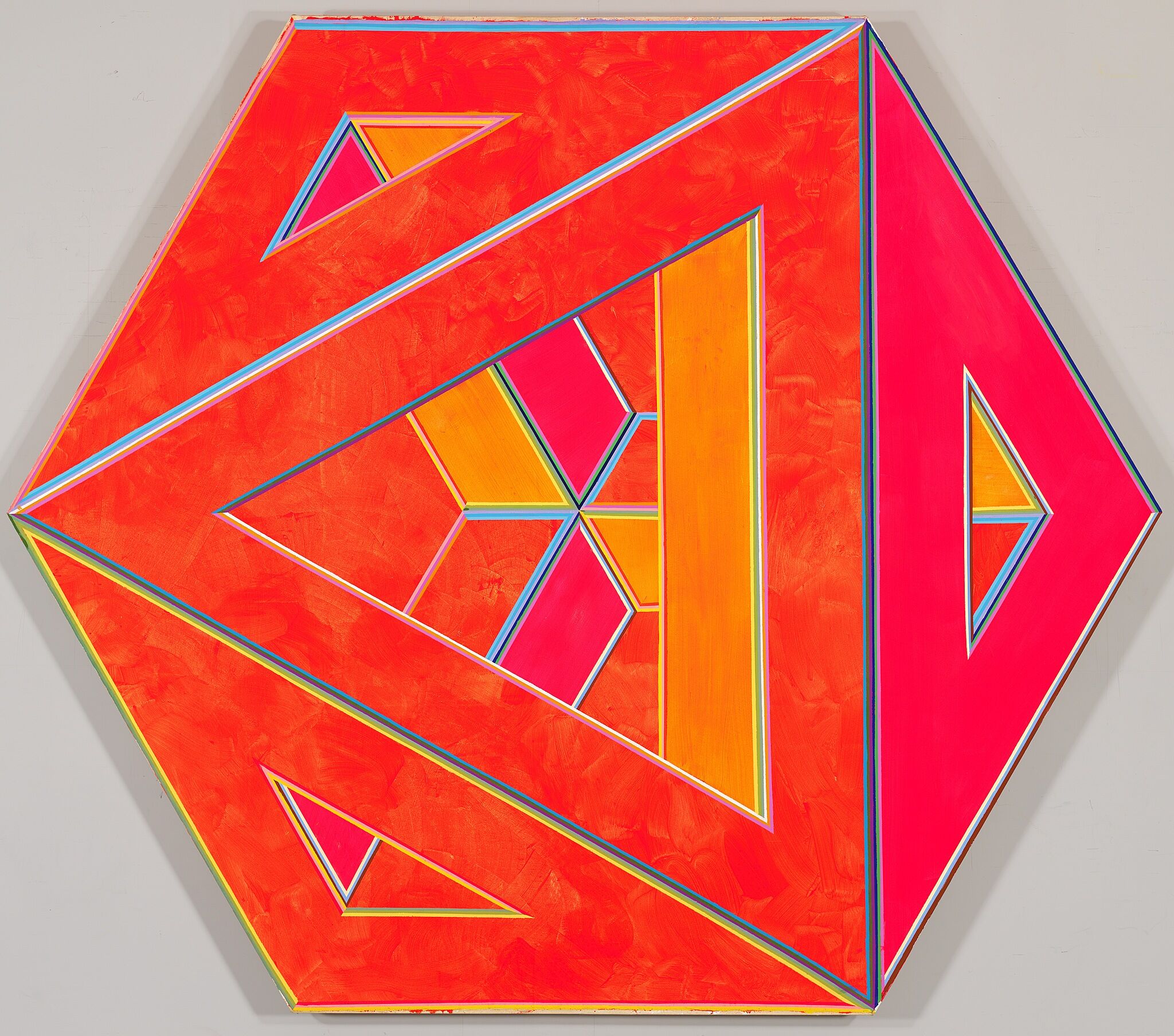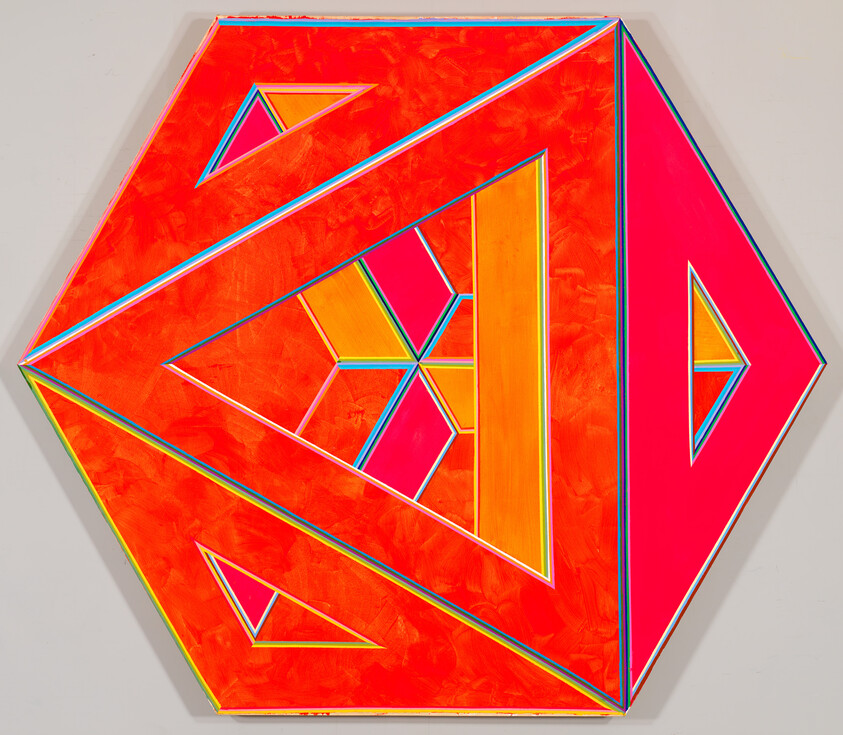Geometric Composition
Alvin Loving once described a geometric shape as a “form that could be very, very dull unless a great deal was done with it.” For this painting, perhaps he asked himself, what can I get this shape to do for me? Instead of a rectangle or a square, Loving used a six-sided canvas and put several geometric shapes next to each other in glowing, bright colors. The shapes appear to move backward and forward in both real and imagined space. Look closely at this painting. What geometric shapes can you see?
Collect a few small objects of different sizes that contain geometric shapes. Draw around the objects with a pencil to make outlines of the shapes. For example, you can draw circles with a can, a jar, or a bottle cap; squares or rectangles with a coaster, a stack of Post-Its, or a small box. Use a single sheet of paper and draw a bunch of overlapping shapes. Then pick three or four colors and fill in the shapes with paint, markers, or colored pencils. What geometric shapes appear to be behind or in front of other geometric shapes?
See all Whitney Kids Art Challenges.


